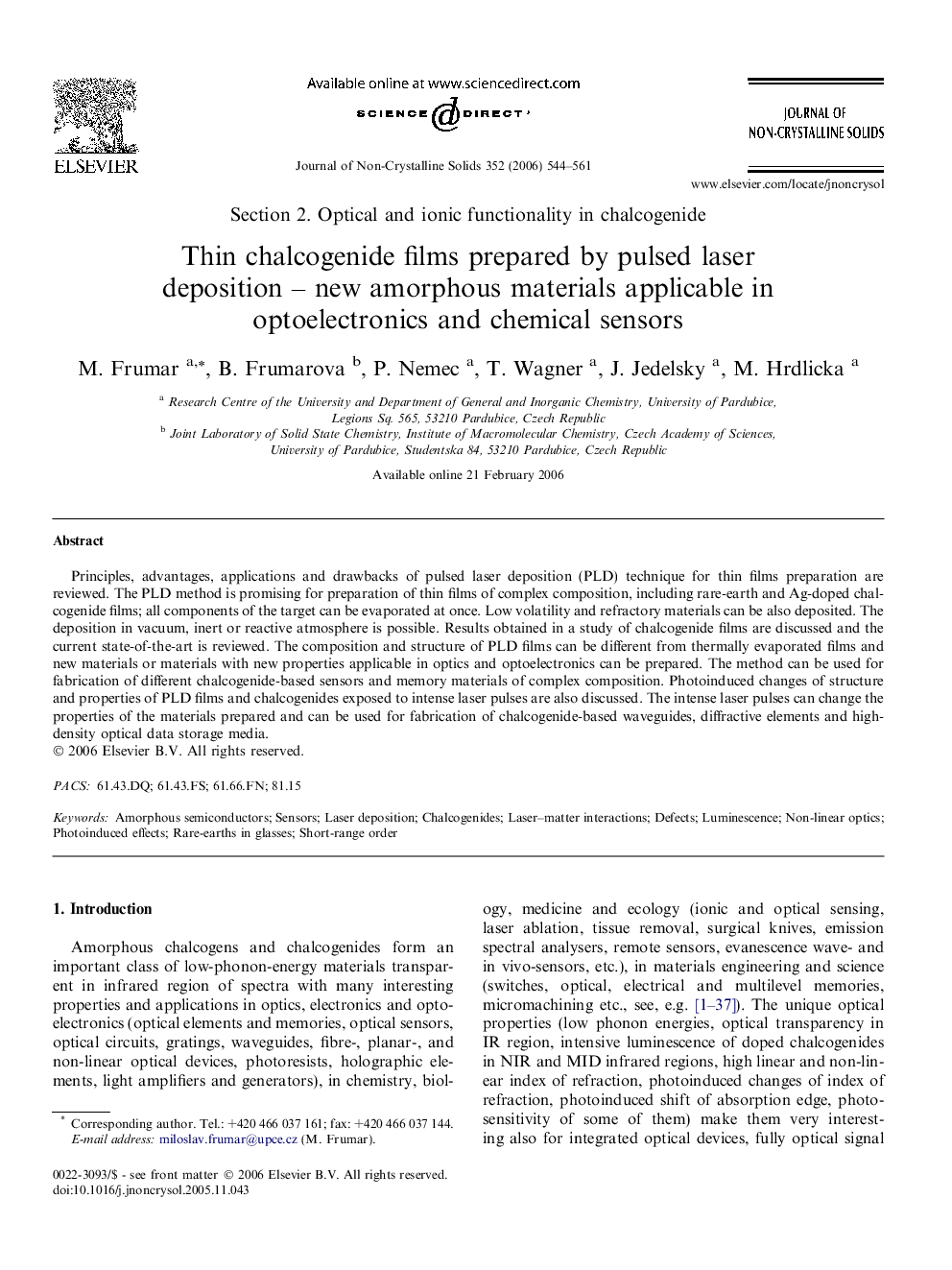| Article ID | Journal | Published Year | Pages | File Type |
|---|---|---|---|---|
| 1486499 | Journal of Non-Crystalline Solids | 2006 | 18 Pages |
Principles, advantages, applications and drawbacks of pulsed laser deposition (PLD) technique for thin films preparation are reviewed. The PLD method is promising for preparation of thin films of complex composition, including rare-earth and Ag-doped chalcogenide films; all components of the target can be evaporated at once. Low volatility and refractory materials can be also deposited. The deposition in vacuum, inert or reactive atmosphere is possible. Results obtained in a study of chalcogenide films are discussed and the current state-of-the-art is reviewed. The composition and structure of PLD films can be different from thermally evaporated films and new materials or materials with new properties applicable in optics and optoelectronics can be prepared. The method can be used for fabrication of different chalcogenide-based sensors and memory materials of complex composition. Photoinduced changes of structure and properties of PLD films and chalcogenides exposed to intense laser pulses are also discussed. The intense laser pulses can change the properties of the materials prepared and can be used for fabrication of chalcogenide-based waveguides, diffractive elements and high-density optical data storage media.
